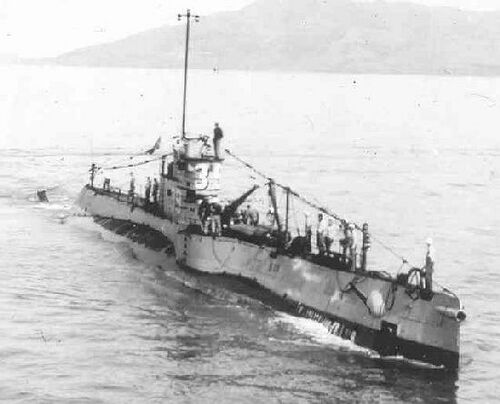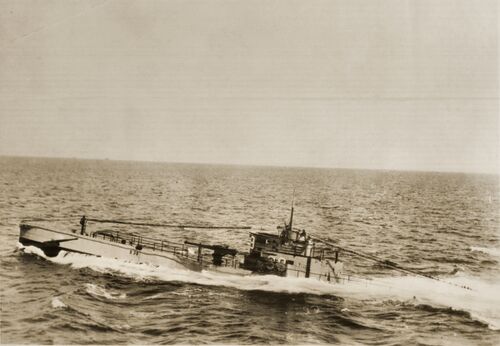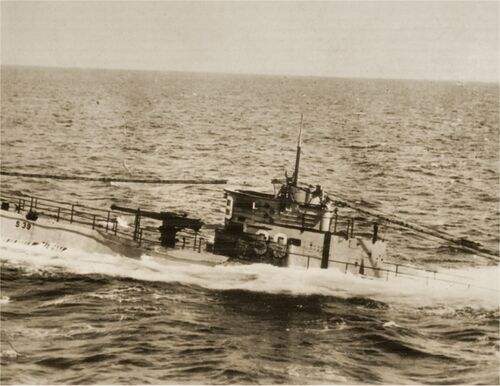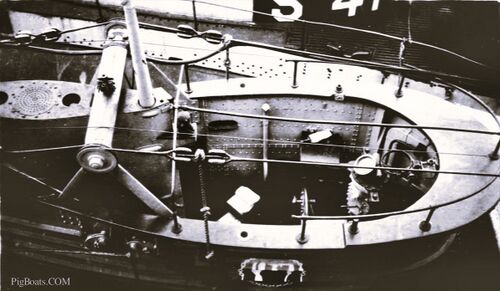S-39
Notes

Photo provided by the late MMCM(SS) Rick Larson, USN (Ret.)

Photo in the private collection of Ric Hedman.

Photo in the private collection of Ric Hedman.

A unique shot looking down into the bridge of the S-39 while she is moored in a nest along with S-41 (SS-146) and others, mid 1930's in the Far East. It is likely that this photo was taken from the deck of a tender, looking down at the boats.
On the right in the photo is the bridge steering station, just behind the bridge fairwater. The empty ring may have held a gyrocompass repeater, removed for maintenance. Directly to the left is the S-39's magnetic compass binnacle, with arms protruding to each side that hold steel compensating spheres, whose purpose was to help correct for the deviations caused by the boat's steel hull. Below the compensating sphere arms on each side is an engine order telegraph, and just out of view between the compass binnacle and the open hatch to the conning tower is a seat for the helmsman, who sat astride the binnacle. The S-boats did not have a traditional wheel at this station, as they were electrically steered using a handheld left/right switch connected to the steering system by a cable.
In the left center of the photo is the periscope shears, a structure used to support the periscopes. #1 periscope is raised, with the other two fully lowered. The S-class submarines had three periscopes, one that let into the conning tower (#1) and two that let into the control room. In between #2 and #3 periscope a drilled hole covering for the main air induction pipe can be seen. This large pipe with a valve on the top end supplied air for the big main diesels in the engine room. The top of the pipe was somewhat below this grating, and additional holes are drilled into the side of the shears to allow additional air in to the pipe while surfaced.
Straddling the shears is a pipe-like bar supported on each end by triangular stanchions. This is a support structure for the boat's combination mine clearance and radio aerial wires that ran fore to aft. The very long radio aerial wires were needed to get the needed range from the relatively low-powered radio sets of the day.
Photo in the private collection of Ric Hedman.
Page created by:
Ric Hedman & David Johnston
1999 - 2023 - PigBoats.COM©
Mountlake Terrace, WA, Norfolk, VA
webmaster at pigboats dot com
